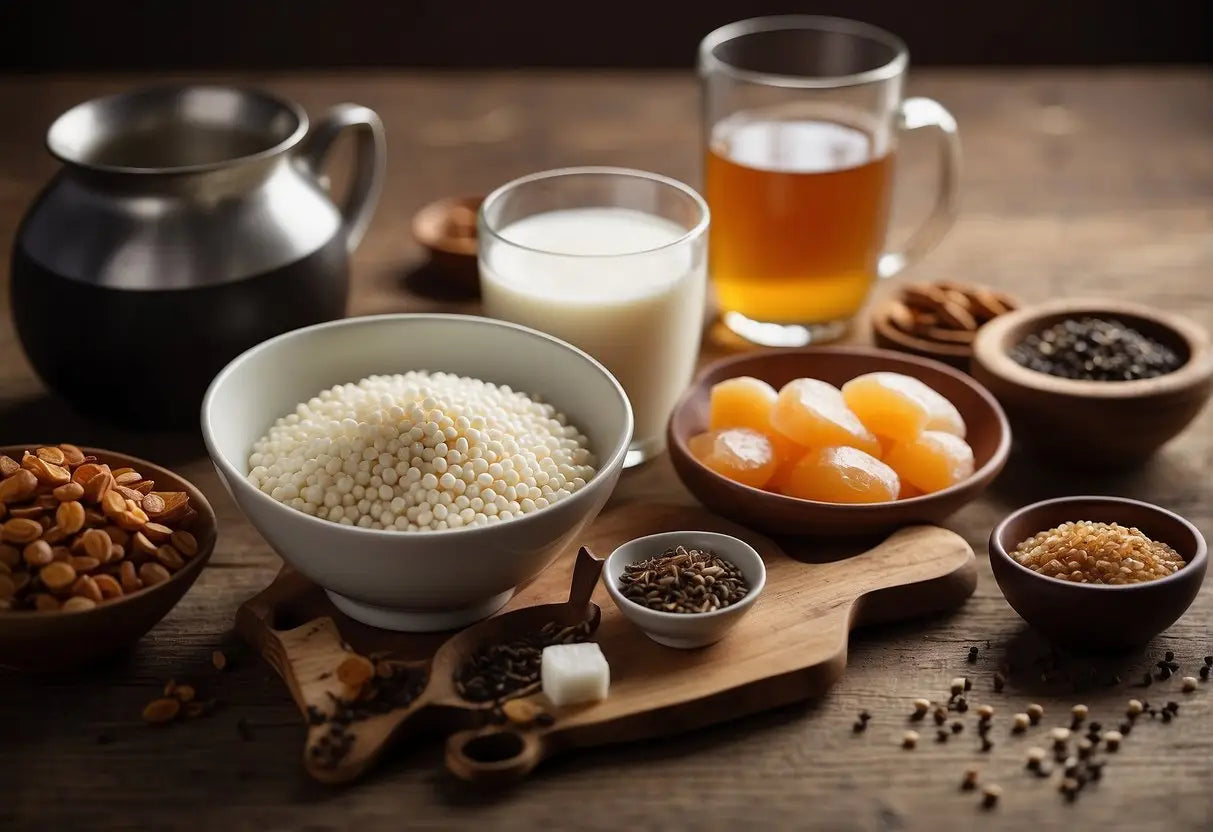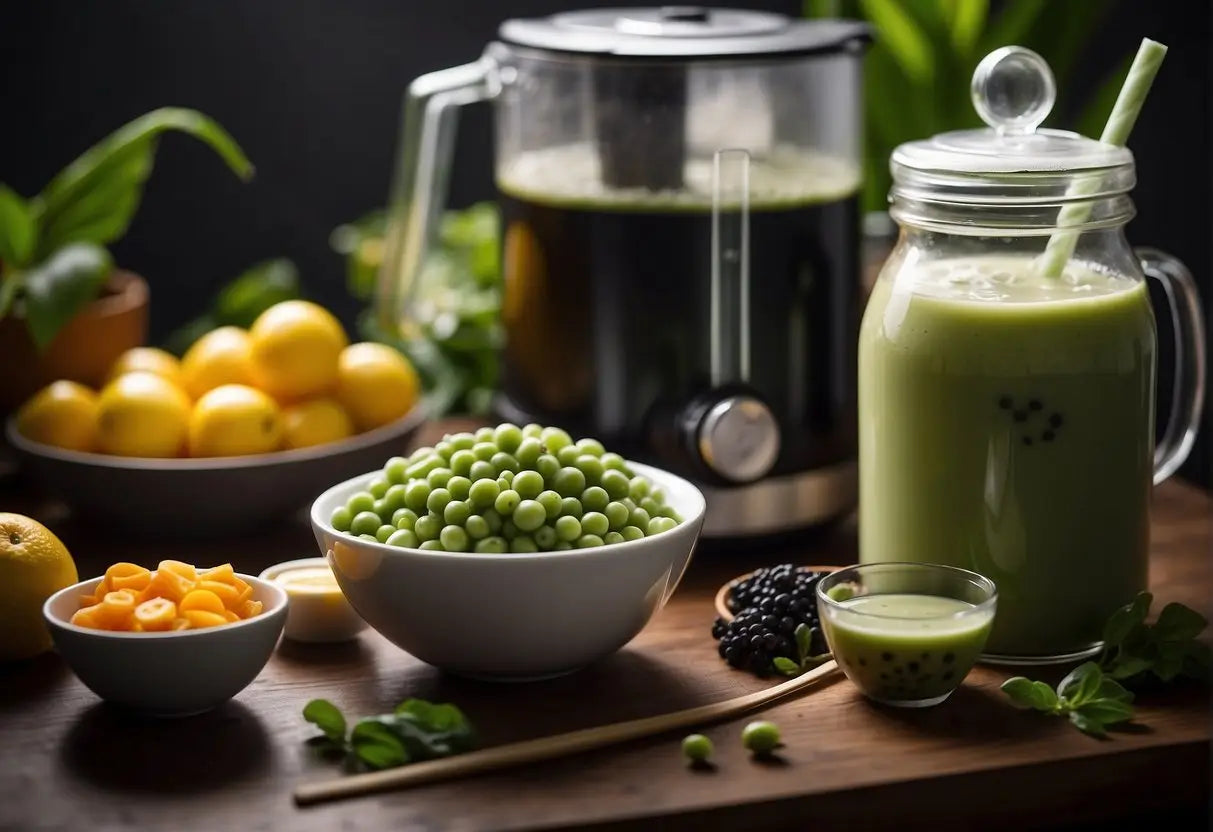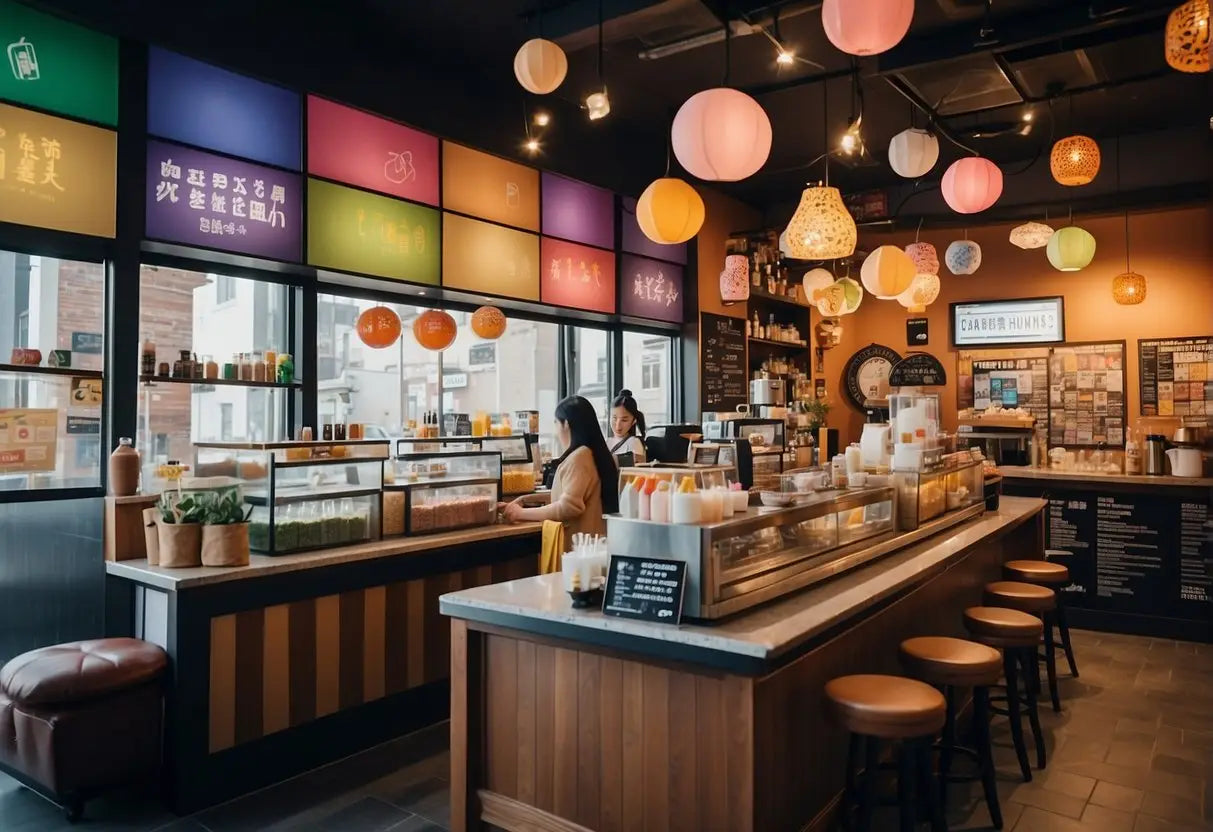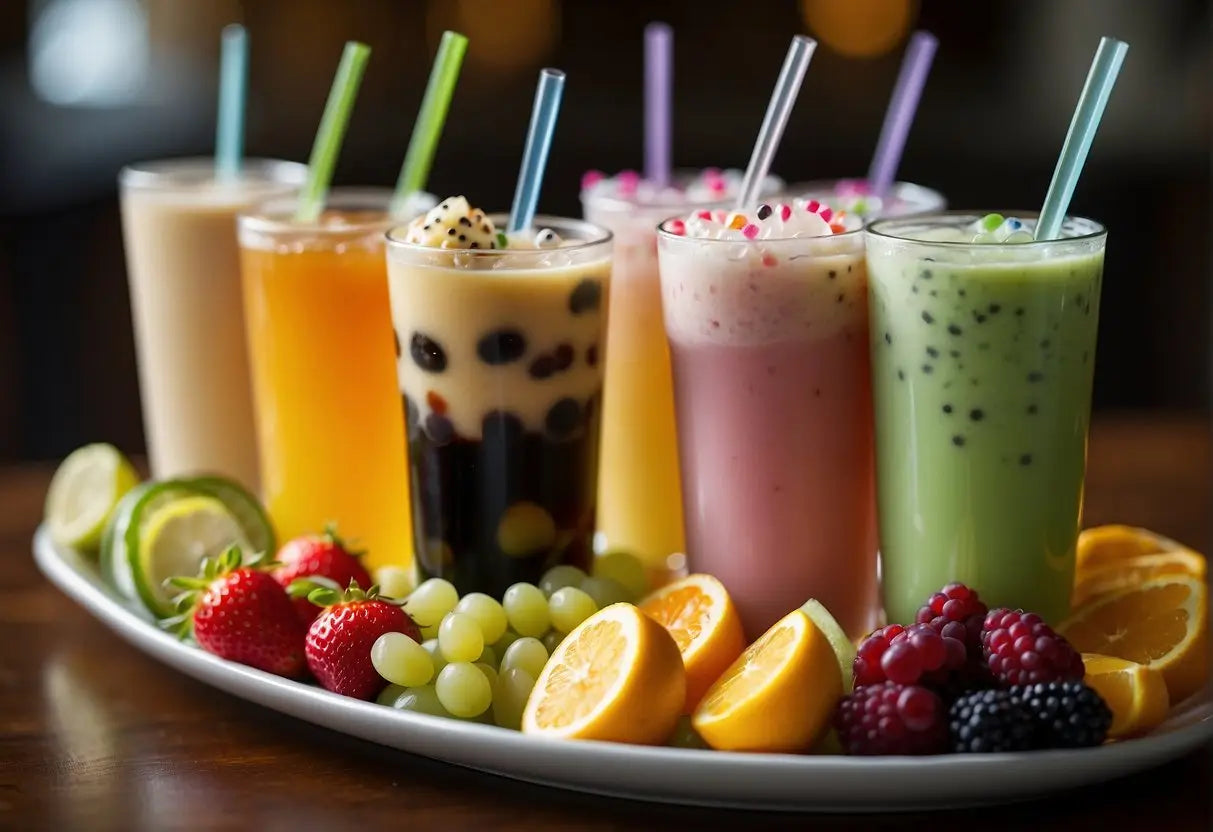What is Bubble Tea
Bubble tea, also known as boba tea, is believed to have originated in Taiwan during the 1980s. The drink typically consists of black tea, milk, and chewy tapioca pearls, although there are numerous variations.
Chronology of Bubble Tea:
- 1980s: Bubble tea is invented in Taiwan. Two tea shops claim the invention: the Hanlin Tea Room in Tainan and Chun Shui Tang in Taichung.
- Late 1980s: Its popularity starts to escalate across East and Southeast Asia.
- 1990s: Bubble tea shops begin to flourish throughout the United States and Canada.
- 2000s: This beverage gains a foothold in Europe and Australia.
Key Components of Bubble Tea:
Bestsellers
- Tea Base: Typically black, green, or oolong.
- Milk: Dairy or non-dairy creamers.
- Tapioca Pearls: The signature "bubbles" or "boba," made from tapioca starch.
The precise story of its invention varies, but a commonly cited tale involves Ms. Lin Hsiu Hui, the product development manager of Chun Shui Tang, who poured sweetened tapioca pudding into her iced tea during a meeting.
Your enjoyment of this unique drink is heightened by knowing its humble beginnings as a simple mixture of tea and tapioca balls in the vibrant night markets of Taiwan, transforming over the years into the global phenomenon you relish today.
Basic Ingredients of Bubble Tea

Bubble tea is a versatile beverage, but its essence lies in four foundational components. These ingredients can be mixed and matched, allowing for a wide range of flavors and textures.
Tea Base
The foundation of bubble tea is the tea base. You may choose from a variety of teas:
- Black Tea: Strong and bold, typically used in classic bubble tea.
- Green Tea: Provides a lighter and more delicate flavor.
- Oolong Tea: Offers a balance between black and green tea flavors.
- Fruit and Herbal Teas: Caffeine-free options with diverse flavors.
Milk Varieties
The creaminess in bubble tea comes from milk varieties. Options include:
- Dairy Milk: Adds richness to the tea.
- Non-Dairy Creamers: A lactose-free alternative that still imparts creaminess.
- Plant-Based Milks: Such as almond, soy, or oat, catering to different dietary needs.
Sweeteners
Sweetness in bubble tea can be adjusted to your taste using different sweeteners:
- Simple Syrup: A common sweetener made from sugar and water.
- Honey: Provides a natural sweetness with a distinct flavor.
- Agave: A vegan option that is sweeter than sugar and honey.
- Flavored Syrups: Used to add both sweetness and flavor, available in a myriad of options.
Tapioca Pearls
The signature element of bubble tea is the tapioca pearls:
- Classic Tapioca Pearls: Chewy and sweet, made from tapioca starch.
- Colored Pearls: Similar to the classic but come in various colors and sometimes flavors.
Variations and Flavors
Bubble tea offers a multitude of flavors, ranging from traditional tastes to modern twists. The drink's versatility lies in its variety – from the classic, familiar favorites to the new, adventurous concoctions.
Classic Flavors
In classic bubble tea, the foundation is typically made from black or green tea. Here are some established flavors that have stood the test of time:
- Milk Tea: The quintessential bubble tea, combining black tea with milk and tapioca pearls.
- Taro: A creamy, vanilla-like flavor with a purple hue, made from taro root.
- Matcha: A Japanese green tea version, known for its vibrant color and distinct taste.
Fruit Flavors
For a refreshing change from milk-based teas, fruit-flavored bubble teas offer a burst of freshness. Some popular fruit flavors include:
- Mango: A tropical and sweet choice, often enriched with chunks of real mango.
- Strawberry: Berry goodness, either as a puree or syrup, paired perfectly with the chew of tapioca pearls.
- Passion Fruit: A tangy and tropical option that's frequently combined with green tea.
Creative Mixes
Innovation in bubble tea has led to a wide array of creative mixes, blending various ingredients for unique experiences. Here are some inventive combinations:
Lao Ban Zhang
- Salted Caramel: A sweet and savory mix, pairing rich caramel with a hint of salt.
- Thai Tea: A spiced-tea version, using condensed milk for a sweet, creamy finish.
- Honeydew Melon: A sweet, melon-flavored drink that's a deviation from the usual tea-base.
Each category presents an opportunity to discover your own preferred style and taste within the expansive bubble tea universe.
Preparation and Serving Methods

Bubble tea, a beloved beverage, is crafted through specific preparation and serving techniques. This ensures the distinct texture and flavor that bubble tea aficionados enjoy.
Brewing Techniques
You begin by selecting tea leaves and brewing them. The choice of tea—green, black, or oolong—is pivotal for the base flavor. Typically, for one cup of bubble tea:
- Heat water to the optimal temperature for your selected tea type.
- Steep the tea leaves or bags for three to five minutes to extract the full flavor profile.
Tapioca Pearl Cooking
After brewing the tea, you cook tapioca pearls, the hallmark of bubble tea. Cook them precisely to achieve the desired chewiness ("Q texture"):
| Cooking Stage | Time | Action |
|---|---|---|
| Initial Boiling | 15-30 minutes | Boil pearls until they float. |
| Sitting | 25-30 minutes | Let them sit in water to absorb moisture and expand. |
| Rinsing | - | Rinse with cold water to stop the cooking process. |
Mixing and Shaking Practices
The final step is to mix and shake your bubble tea for a uniform blend of flavor and texture. You'll typically:
- Add your choice of sweetener (sugar syrup, honey, etc.) to the brewed tea and stir.
- Place the cooked tapioca pearls in a shaker, pour in the sweetened tea, and add ice.
- Shake vigorously for about 15-30 seconds to chill the tea and create a frothy texture.
- Serve immediately with a wide straw to enjoy the full bubble tea experience.
Nutritional Information

When you indulge in bubble tea, you're consuming a beverage with a unique nutritional profile. The base of bubble tea usually consists of tea, milk, and sugar, accompanied by chewy tapioca pearls or other types of toppings.
Typical Values for a 16oz serving of Bubble Tea:
- Calories: Ranges from 200 to 450 kcal, significantly impacted by the additions of sweeteners and toppings.
- Carbohydrates: Approximately 50-75g, with the majority coming from sugar.
- Protein: Roughly 0-5g depending on the type of milk used.
- Fat: Generally low, about 0-5g, with variations based on milk choice.
Table 1: Bubble Tea Macronutrients
| Ingredients | Amount |
|---|---|
| Tea (Black or Green) | 1 cup |
| Milk (Dairy or Alternative) | 1/4 cup |
| Cooked Tapioca Pearls | 1/3 cup |
| Sugar/Sweetener | 1-2 tablespoons |
Note: These values are estimations and can vary.
Your bubble tea's nutritional content can be customized:
- Opt for less or no added sugar to reduce calorie intake.
- Choose a lower-fat milk or a milk alternative for a lighter option.
- Adjust the portion size of toppings like tapioca pearls to control carbohydrate intake.
Nutrition labels or information provided by the vendor can offer more precise data, enabling you to make informed choices about what you're drinking.
Cultural Impact and Global Popularity

Bubble tea, originating from Taiwan in the 1980s, has experienced a surge in popularity that has propelled it far beyond its borders. You'll find this beverage in major cities across the globe, with its influence seen in various aspects of culture including food, fashion, and entertainment.
Asia:
- Taiwan: The birthplace, where it is an integral part of local culture and daily life.
- Japan and South Korea: Featured frequently in pop culture and trendy cafes.
North America:
- Urban Centers: High prevalence in cities with significant Asian communities, such as Vancouver, San Francisco, and New York.
Europe:
- Western Europe: Rapidly growing popularity, especially in the UK, Germany, and France.
In your travels or online browsing, you might notice merchandise like bubble tea plushies or phone cases, illustrating its cultural imprint. Social media, especially platforms like Instagram and TikTok, are rife with colorful photos and videos of the drink, which has become a symbol of modern, accessible exoticism.
Consumer Demographics:
- Young Adults: Particularly popular among teenagers and millennials, often seen as a trendy and photogenic accessory.
- Diverse Backgrounds: Enjoyed by people of various ethnicities, reflecting its universal appeal.
Impact on Food Industry:
- Menu Inclusions: Many cafes and restaurants now include bubble tea, showing its integration into mainstream dining.
- Specialty Shops: A rise in dedicated bubble tea stores, indicating its market potential and demand.
The rise of bubble tea speaks to broader themes of globalization and the international exchange of ideas. Its story is a testament to the way a local delicacy can become a worldwide phenomenon, fostering connections and shared experiences across cultures.
Customization Options

Bubble tea offers a variety of customization options, allowing you to tailor your drink to your personal taste preferences.
Adjusting Sweetness Levels
- Choose Your Sweetener: Common sweeteners include sugar syrup, honey, brown sugar, and artificial sweeteners.
- Select the Amount: Most bubble tea shops allow you to specify the level of sweetness, often ranging from 0% to 100%.
Example:
| Sweetness Level | Description |
|---|---|
| 0% | No sweetener added |
| 25% | Lightly Sweet |
| 50% | Half Sweet |
| 75% | Less Sweet than standard |
| 100% | Standard Sweetness |
Toppings and Add-Ins
- Common Toppings: Tapioca pearls, grass jelly, aloe vera, and pudding are popular choices.
- Novel Options: Cheese foam, fruit pieces, and popping boba can add unique flavors and textures.
Example List of Toppings:
- Tapioca Pearls (Black/Colorful)
- Grass Jelly
- Pudding (Caramel/Egg/Almond)
- Red Bean
- Cheese Foam
- Fresh Fruit (Mango/Strawberry/Kiwi)
- Popping Boba (Lychee/Passionfruit/Mango)
Business and Industry
Bubble tea, also known as boba tea, has catapulted from a popular street food in Taiwan to a booming industry worldwide. In the last two decades, your options for this beverage have expanded with new businesses dedicated solely to crafting bubble tea. The industry has seen consistent growth, influenced by consumer demand for diverse and Instagram-worthy drinks.
Economic Impact:
| Year | Global Market Value |
|---|---|
| 2020 | $2.4 Billion |
| 2021 | $2.6 Billion |
| Projection 2027 | $4.3 Billion |
The economic impact is significant, with a compound annual growth rate (CAGR) of 7.2% from 2020 to 2027.
Entrepreneurial Opportunities:
Due to its popularity, bubble tea has encouraged entrepreneurism. New shops are opening, with franchising opportunities becoming a common path to business ownership. You might find local boba shops have become community hubs, while international franchises are spreading their reach.
Supply Chain Considerations:
To start your bubble tea business, you’ll need a reliable supply chain. Key ingredients include:
- Tea (Black, Green, Oolong)
- Milk or alternative milk products
- Tapioca pearls or other toppings such as fruit jellies
- Sweeteners (sugar, honey, syrup)
Sourcing these ingredients sustainably can help improve your brand's reputation amidst environmental concerns.
Influence on Adjacent Markets:
Your market preference has a ripple effect. The bubble tea craze influences adjacent industries such as:
- Packaging: a rise in specialized cups and straws
- Dairy & Alternatives: increased use of milk, almond, oat, and soy milk
- Sweeteners: innovations in flavor and combinations
Investing in high-quality ingredients and innovative flavors can help you stand out in this highly competitive market.
Sustainability and Environmental Concerns
When you enjoy bubble tea, your environmental impact is a significant consideration. The primary components—tea, milk, and tapioca pearls—have varying degrees of environmental footprint. Below are key concerns:
Ingredients' Origin:
- Tea: Cultivation impacts deforestation and biodiversity. Verify if it's sustainably sourced.
- Milk: Dairy or plant-based, both have carbon and water footprints. Consider the source's sustainability practices.
- Tapioca Pearls: Their production involves water and potential chemical use.
Packaging:
- Single-use plastics for cups, straws, and seals contribute to waste.
- Options include:
- Biodegradable straws/cups.
- Reusable containers.
Waste Management:
- Recycling is often complicated due to mixed materials.
- Disposal contributes to landfill mass and associated methane emissions.
Transportation:
- Importing ingredients increases carbon emissions.
Consumption Choices Affect Impact:
- Opting for eco-friendly alternatives.
- Supporting shops with sustainability initiatives.
Remember, your choices can influence industry practices and environmental outcomes.
Frequently Asked Questions
In this section, you'll find direct answers to common queries about bubble tea, from its ingredients to the reasons behind its global appeal.
What are the base ingredients of bubble tea?
The base ingredients of bubble tea typically include a tea foundation, milk or a non-dairy substitute, sweeteners like sugar or syrup, and the distinctive tapioca pearls. Some variations may use fruit instead of milk-based products.
What are the different flavors available for bubble tea?
Bubble tea comes in a variety of flavors ranging from classic black and green teas to fruit-flavored selections such as strawberry, mango, and passionfruit. Additionally, there are creative combinations like taro, matcha, and chocolate.
What are the health implications of consuming bubble tea?
Consuming bubble tea occasionally is generally considered safe for most individuals; however, it is high in sugar and calories. Frequent consumption can contribute to an increase in dietary sugar intake, potentially impacting overall health.
What are the chewy pearls in bubble tea made from?
The chewy pearls, often referred to as boba, in bubble tea are made from tapioca starch. This starch is derived from the cassava root and is processed into the pearl-like balls that provide the signature texture of bubble tea.
How does bubble tea differ from traditional boba drinks?
Bubble tea and traditional boba drinks both contain tapioca pearls, yet bubble tea often includes a greater variety of flavors and ingredients. Traditional boba milky drinks are more focused on the creaminess and tea flavor.
Why has bubble tea gained such popularity internationally?
Bubble tea has gained popularity internationally due to its unique combination of flavors, textures, and the novelty of tapioca pearls. Marketing efforts and the rise of Asian cuisine's global influence have also played key roles in its widespread appeal.
← Older post Newer post →











